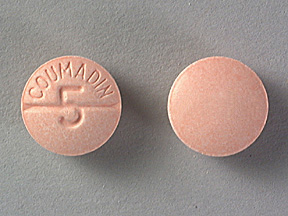
Question
Does warfarin predispose patients to osteoporosis? Would the newer anticoagulants dabigatran or rivaroxaban be preferred in patients with atrial fibrillation who have osteoporosis?
Response from Laura S. Lehman, PharmD
Clinical Pharmacy Coordinator, Carroll Hospital Center, Westminster, Maryland
Vitamin K is involved in bone metabolism. Thus, concern has arisen that warfarin, a vitamin K antagonist, could interfere with bone metabolism, putting patients at risk for such bone disorders as osteoporosis and bone fractures.
The predominant vitamin K-dependent protein in bone is osteocalcin, accounting for up to 15% of noncollagenous bone.[1,2] Vitamin K carboxylation makes osteocalcin more adherent to calcium and hydroxyapatite.[2] When osteocalcin is under-gamma-carboxylated, bone mineral density is decreased and the fracture rate is increased.[1] Furthermore, vitamin K supplementation has been shown to reduce bone turnover and improve bone strength.[3,4]
Of note, more vitamin K is needed for carboxylation of the vitamin K-dependent bone proteins than for activation of clotting factors, prompting some to advocate for a higher recommended daily intake of vitamin K for bone health.[4] The impact of warfarin in this setting is not well established.
Large clinical studies of bone disease in patients on warfarin therapy have had conflicting results. For example, The Osteoporotic Fractures in Men Study[5] found no association between current warfarin use and bone mass, bone loss, or fracture risk. However, this prospective cohort study of over 5500 elderly men did not evaluate duration of warfarin use and included patients receiving treatments for osteoporosis. In contrast, a retrospective observational study of Medicare recipients with atrial fibrillation found that elderly patients who received warfarin long-term (≥ 1 year) had a 25% increased risk for osteoporotic fracture (significant in men, but not women), but those receiving short-term warfarin therapy (< 1 year) did not demonstrate increased risk.[6]
Prospective cohort data from the Study of Osteoporotic Fractures[7] involving over 6000 elderly women found no difference in bone loss or fractures in those taking warfarin (149 patients) compared with those not taking warfarin. The exact duration of warfarin use was not assessed; however, all patients had been taking warfarin for at least 2 years at the time of enrollment. Further clarification of the risk for adverse bone effects of warfarin is needed.
Rivaroxaban is a direct factor Xa inhibitor. Low-molecular-weight heparins, which are also direct factor Xa inhibitors, have demonstrated negative effects on bone. Solayar and colleagues[8] conducted an in vitro study of the effects of rivaroxaban and enoxaparin on human osteoblast cells. They found that both enoxaparin and rivaroxaban decrease osteoblast function, as measured by alkaline phosphatase activity. Rivaroxaban had a more negative effect than enoxaparin on this measurement. In addition, osteocalcin function was significantly decreased by rivaroxaban. Osteoblast signaling via gene expression was noted for both drugs and explains a mechanism for disrupting ossification with these anticoagulants. In vivo studies are needed to determine whether these effects will be seen with use of rivaroxaban.
A literature search did not identify in vivo or in vitro studies of dabigatran, a direct thrombin inhibitor, and bone disorders.
The prescribing information for each anticoagulant -- warfarin, rivaroxaban, and dabigatran -- does not mention an effect on bone.[9-11] Consideration of bone effects would be one factor, on the basis of limited evidence, in the choice of agent for stroke prevention in atrial fibrillation. Whether warfarin adversely affects bone health remains to be clearly demonstrated in clinical trials. Some data suggest that warfarin impairs bone mineralization and increases risk for fractures. To compound this, many patients taking warfarin avoid vitamin K-rich foods in their diets, which could have additional negative impact bone health.
Because vitamin D has been shown to have an additive effect with vitamin K in reducing bone loss, adequate intake of vitamin D along with calcium should be ensured in patients taking long-term warfarin.[4] Close evaluation for osteoporosis, bone fractures, and other bone disorders, particularly in patients receiving long-term warfarin therapy and potentially rivaroxaban, would be judicious.
References
-
Panel on Micronutrients, Subcommittees on Upper Reference Levels of Nutrients and of Interpretation and Use of Dietary Reference Intakes, and the Standing Committee on the Scientific Evaluation of Dietary Reference Intakes. Vitamin K. In: Dietary Reference Intakes for Vitamin A, Vitamin K, Arsenic, Boron, Chromium, Copper, Iodine, Iron, Manganese, Molybdenum, Nickel, Silicon, Vanadium, and Zinc. Washington, DC: The National Academies Press; 2001.
-
Shearer MJ. The roles of vitamins D and K in bone health and osteoporosis prevention. Proc Nutr Soc. 1997;56:915-937. Abstract
-
Price CT, Langford JR, Liporace FA. Essential nutrients for bone health and a review of their availability in the average North American diet. Open Orthop J. 2012;6:143-149. Abstract
-
Adams J, Pepping J. Vitamin K in the treatment and prevention of osteoporosis and arterial calcification. Am J Health Syst Pharm. 2005;62:1574-1581. Abstract
-
Woo C, Chang LL, Ewing SK, Bauer DC; Osteoporotic Fractures in Men Study Group. Single-point assessment of warfarin use and risk of osteoporosis in elderly men. J Am Geriatr Soc. 2008;56:1171-1176. Abstract
-
Gage BF, Birman-Deych E, Radford MJ, Nilasena DS, Binder EF. Risk of osteoporotic fracture in elderly patients taking warfarin: results from the National Registry of Atrial Fibrillation 2. Arch Intern Med. 2006;166:241-246.Abstract
-
Jamal SA, Browner WS, Bauer DC, Cummings SR. Warfarin use and risk for osteoporosis in elderly women. Study of Osteoporotic Fractures Research Group. Ann Intern Med. 1998;128:829-832. Abstract
-
Solayar GN, Walsh PM, Mulhall KJ. The effect of a new direct factor Xa inhibitor on human osteoblasts: an in-vitro study comparing the effect of rivaroxaban with enoxaparin. BMC Musculoskelet Disord. 2011;12:247.
-
Coumadin® package insert. Princeton, NJ; Bristol-Myers Squibb: 2011.
-
Xarelto® package insert. Titusville, NJ; Janssen Pharmaceuticals, Inc: 2011.
-
Pradaxa® package insert. Ridgefield, CT: Boehringer Ingelheim Pharmaceuticals, Inc: 2012.





 留言列表
留言列表
 線上藥物查詢
線上藥物查詢 